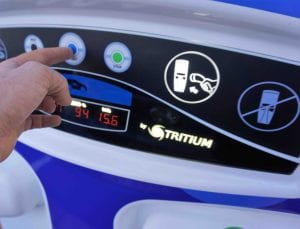A team of researchers based in Europe has developed a hydrogen fuel cell that switches out rare and costly platinum and replaces it with iron, lowering one of the key barriers to a technology that many hope can help decarbonise heavy transport, shipping and aviation.
Hydrogen fuel cells convert hydrogen to electricity with water vapour as the only by-product, making them a sustainable alternative – as long as the hydrogen is sources from renewables – for portable power, particularly in vehicles.
Currently, however, fuel cells rely on a catalyst made of platinum, which is expensive and scarce – according to the researchers – and accounts for around 60% of the cost of a single fuel cell.
To get around this, the EU team, team led by Imperial College London, have created a catalyst using only iron, carbon, and nitrogen – materials that are cheap and abundant – and successfully demonstrated that it can be used to operate a fuel cell at high power.
The team’s breakthrough was to produce a catalyst where the iron was dispersed as single atoms within an electrically conducting carbon matrix, making it more reactive.
In its lab tests, the team showed that a single-atom iron catalyst had performance approaching that of platinum-based catalysts in a real fuel cell system.
As well as producing a cheaper catalyst for fuel cells, the researchers say the method could be adapted for other catalysts for other processes, such as chemical reactions using atmospheric oxygen as a reactant instead of expensive chemical oxidants.
“Specifically, we used a unique synthetic method, called transmetallation, to avoid forming iron clusters during synthesis,” said first author Dr Asad Mehmood, from the department of chemistry at Imperial.
“This process should be beneficial to other scientists looking to prepare a similar type of catalyst,” he said.
The team collaborated with UK fuel cell catalyst manufacturer Johnson Matthey to test the catalyst in appropriate systems and now hopes to scale up their solution to be used in commercial fuel cells.
First, however, they will work to improve the stability of the catalyst, so it matches platinum in durability as well as performance.
“To make fuel cells a real viable alternative to fossil-fuel-powered vehicles, for example, we need to bring that cost down,” said lead researcher Professor Anthony Kucernak, also from Imperial’s chemistry department.
“Our cheaper catalyst design should make this a reality, and allow deployment of significantly more renewable energy systems that use hydrogen as fuel, ultimately reducing greenhouse gas emissions and putting the world on a path to net-zero emissions.”










